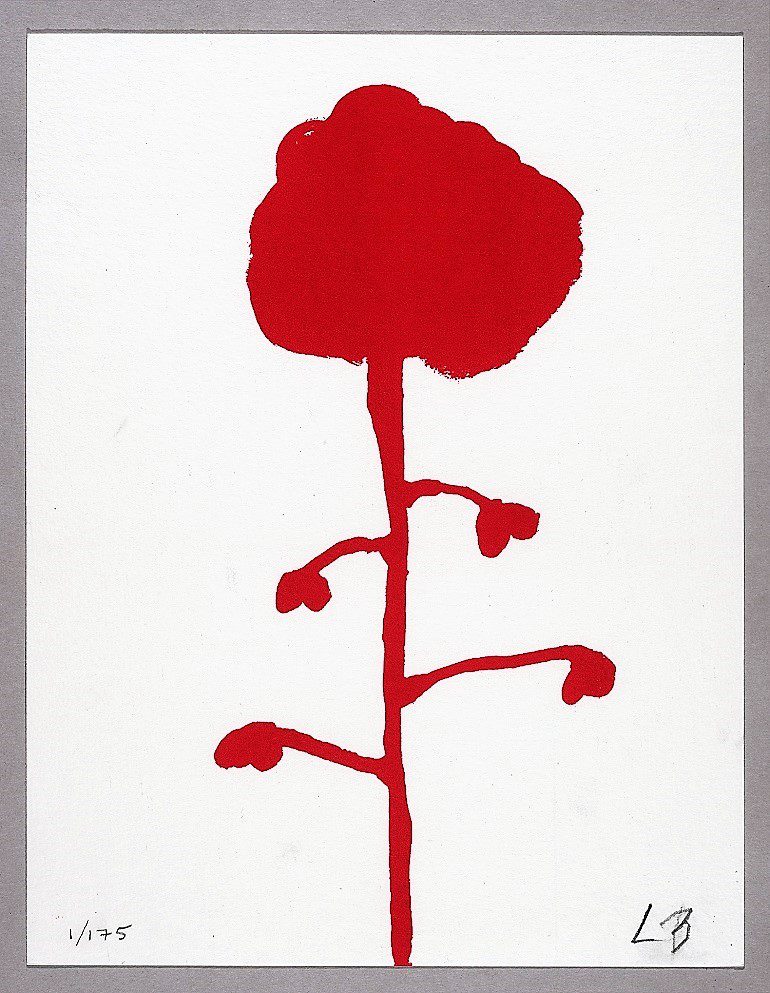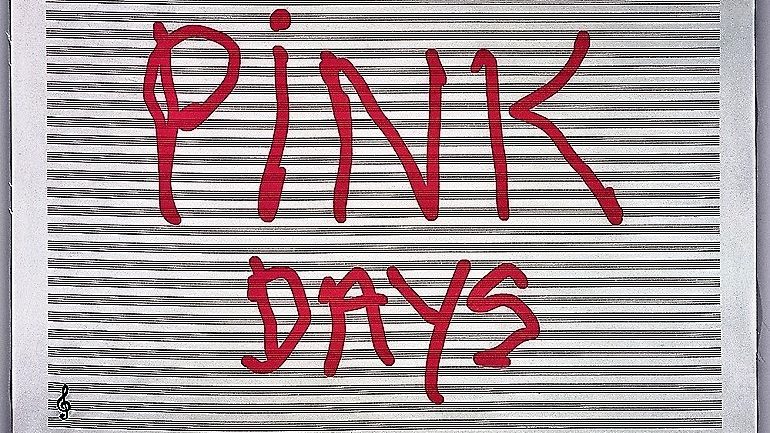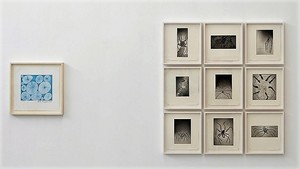ART NEWS
Pink Days, a 2008, archival dye printed on fabric, with embroidery by the celebrated French-American artist Louise Bourgeois on display at the Gordon Gallery, Tel Aviv shows the artist’s affinity for pink.
ART REVIEW
Pink Days/Blue Days, an art exhibition of prints by the celebrated French-American artist Louise Bourgeois in Tel Aviv reveals a restless artist always in search of new ways to express her creativity.
BY KAZAD
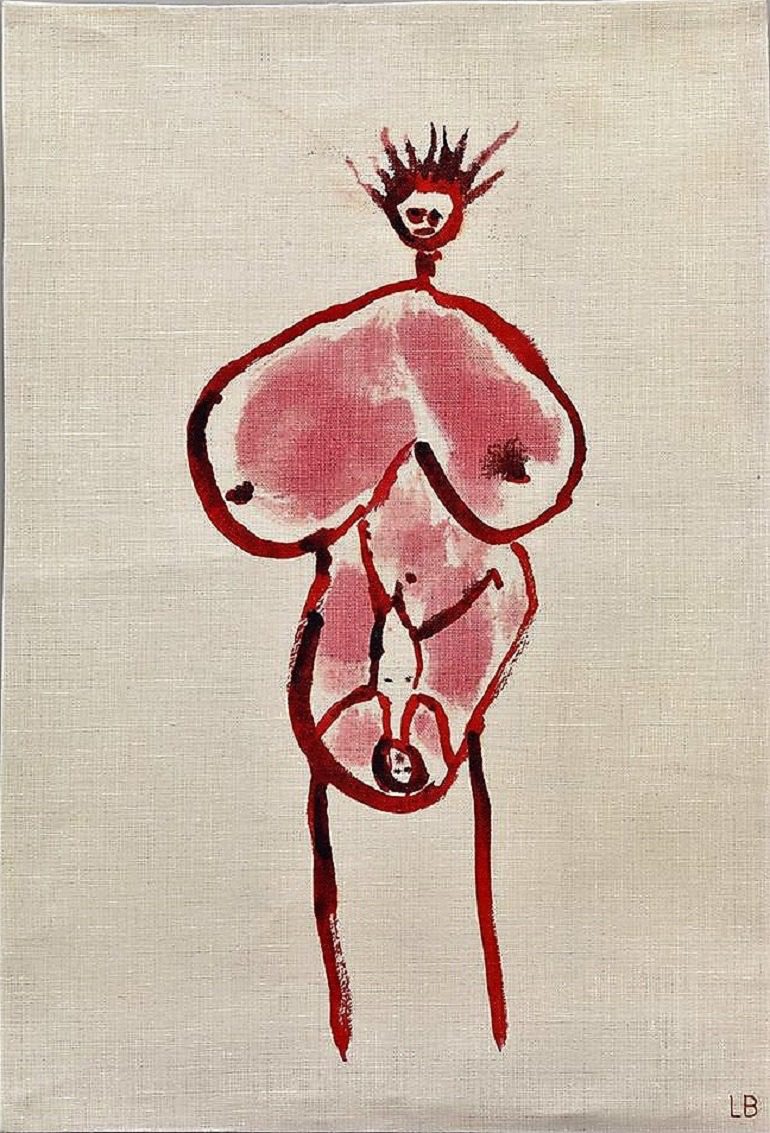
TEL AVIV, ISRAEL – Presently at the Gordon Gallery in Tel Aviv is a must-see exhibition of prints by the French-American artist Louise Bourgeois (1911-2010). Titled Pink Days/Blue Days, this is the first solo gallery exhibition in Israel showcasing prints by the celebrated artist.
Pink Days/Blue Days features 29 of Bourgeois’s prints, many of which were created in the last decade of her life. They include quintessential motifs identified with Bourgeois, who, through her extraordinarily fertile career, explored printmaking as a mainstay of her artistic oeuvre.
The title of the exhibition comes from a sculpture of the same title that Bourgeois created in 1997. The sculpture includes garments hanging at various heights from a central steel pole. This sculpture marks a transitional point for the artist, who started incorporating some of her own clothes into sculptures and installations as early as 1996. Using old handkerchiefs, bedding, and clothing as backgrounds, she created several prints that have come to mark the last decade of her career. The title also references the expression “pink days,” written in pink over the pages of a music notebook that Bourgeois made in 2008.
What Happened to Louise Bourgeois?
Throughout her life, Bourgeois had an affinity for the colors pink and blue. For her, the color pink symbolizes femininity and happiness, while blue signifies melancholy and depression. For the artist, blue also represents the sky, which expresses feelings of escape and relaxation.
Pink and Blue are indicative of Bourgeois topsy-turvy life. As a wife, mother, and artist, Bourgeois’ life was full of unfathomable challenges that transformed her art and left an indelible impact. From her father’s infidelity to patriarchy and emotional issues, she was confronted with different challenges. In other words, her life was full of Pink Days/Blue Days.
Presented concurrently with Bourgeois’s solo show Twosome at the Tel Aviv Museum of Art, several of the prints in this art exhibition illuminate those Pink Days/Blue Days experiences known only to the artist’s close friends. Some of the topics include the Mother-Spider; The Family; The Passage of Time; Motherhood; and the Natural World.
In addition to showing Bourgeois’ prowess as a printmaker, the works in this exhibition speak to her relentless search for new ways and materials to express her artistic thoughts. Several pieces are on fabric, representing Bourgeois’ late work with clothing and textiles. In the last decade of her life, Bourgeois started incorporating some of her own clothes into sculptures and installations. She used old handkerchiefs, bedding, and clothing as backgrounds for her prints. Subsequently, she created printed fabric books made from pieces of cloth, worn and characterized by their domestic use.
Pink Days/Blue Days includes important series showing Bourgeois’ deep reflections about nature, the soul, and rejuvenation. In the 1998 etching series Topiary: The Art of Improving Nature, the artist explores the human body as a site of death and rejuvenation. In some of the images, Bourgeois drew a headless body encased in the shell of its garments using a fine drypoint line. Pink stumps grow out of the knee and shoulder joints.
Created when the artist was 85 years old, the Topiary: The Art of Improving Nature seems to point to the artist’s realization of her own mortality and that death was inevitable. Instead of seeing death as an end, however, she saw it as a process of rejuvenation, perhaps a reincarnation.
Some of the prints in The Topiary: The Art of Improving Nature series also highlight Bourgeois’ effort to externalize internal emotions. There is a hallowing of the subconscious in a way that gives birth to a recovery. As a wife, mother, and artist, Louise Bourgeois struggled emotionally. In The Good Mother, Bourgeois depicts a pregnant woman with the baby visible inside her. The archival dyes printed on fabric with hand-colored prints are a reminder of the trauma of motherhood. From the woman’s larger-than-life breasts to her scruffy hair and the dreadful expression on her face, it is clear that motherhood has deep implications. In addition to what happens to the woman’s body, there is also the issue of postpartum depression and all the anxiety that comes with childbearing.
Bourgeois suffered from anxiety, a trait she thought she inherited from her mother. She was also agoraphobic and often had insomnia, an ailment that often set her into a tailspin. According to some accounts, Louise Bourgeois would go on a rampage after days of not sleeping, smashing things, and destroying her own works. Sadly, no medicine could cure her disorder. Sadly, no medicine could cure her disorder. Not even psychotherapy. For more than 30 years, she had to go through psychoanalysis. It is not surprising that some of Louise Bourgeois’ works reveal the theme of anxiety. From the arched figures that address issues of hysteria to the cupped cups, she used to nurse her ailing mother, associated with her father’s infidelity, many of Bourgeois’ works are autobiographical. They articulate a range of her emotions, including desire, anxiety, loneliness, pain, and anger.
It is not surprising that some of Louise Bourgeois’ works reveal the theme of anxiety. From the arched figures that address issues of hysteria to the cupped cups, she used to nurse her ailing mother, associated with her father’s infidelity, many of Bourgeois’ works are autobiographical They articulate a range of her emotions, including desire, anxiety, loneliness, pain, and anger.
Why is Louise Bourgeois Important?
Yes, Louise Bourgeois was an important artist of her generation, and her art continues to influence contemporary artists. She remains one of the great figures of modern and contemporary art. With an artistic career spanning eight decades from the 1930s until 2010, museums and art institutions continue to celebrate her achievements. Bourgeois is famous for her large-scale sculptures and installations.
Louise Bourgeois was a feminist, and many of her works, including some of the prints in this show, articulate her struggles with the male-dominated art scene. In the 1950s, when Louise Bourgeois began to forcefully insert herself into the art world, it was difficult for her to get any traction because the patriarchal art world was focused on male artists.
The privileging of male artists, especially members of the abstract expressionists like Jackson Pollock and Mark Rothko by the patriarchal art world, was upsetting for the emerging Bourgeois.
The manner in which her sculptures were overshadowed by the work of the male abstract expressionists who were her contemporaries, some scholars have noted, turned Louise Bourgeois into a feminist and a rebel. With the understanding of the prejudice that gave credence to male artists, her works soon became the medium to tackle patriarchy. At the core of the fight was the female body.
For Bourgeois, the female body is the surface on which male artists inscribe their prejudices and, therefore, must be the focus of the fight against male authority. She argued that the Surrealists made women the object of their work. She started making women the subject of her works in order to challenge the Surrealist depiction of women.
Bourgeois’ fight to reclaim the female body is evident in The Young Lady. The drypoint on paper and cloth with the hand-coloring piece is in three sections. On the left side of the piece is the upper torso of a woman, and on the right is her naked lower torso. At the center of the piece, the upper torso comes together with the lower torso to reveal the full figure of the naked woman.
Done in pink, the piece seems to address the manner in which women are objectified. Instead of describing the woman based on her looks or sexual endowment, Louise Bourgeois seems to contend with The Young Lady that the woman should be seen not as an object of beauty but as a human being with brains, and outstanding ability. Bourgeois’ repositioning of The Young Lady at the center of the piece not only re/presents her as the dominant subject of the piece but also as a proud woman.
Life of a Restless Artist and Print Maker
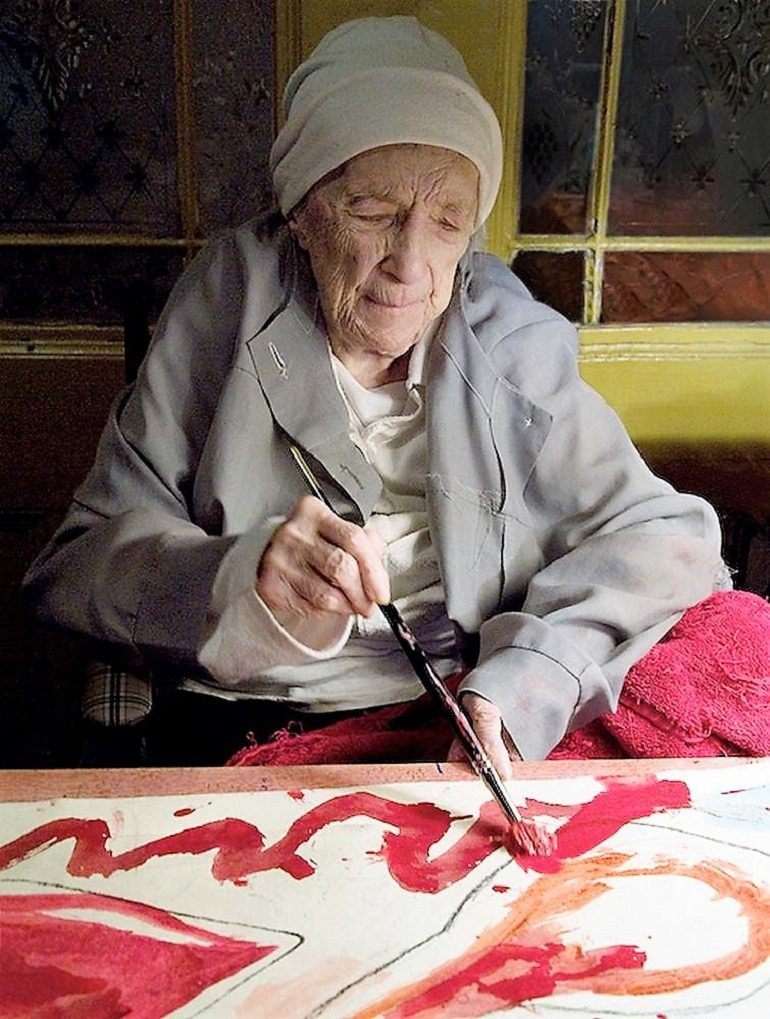
Pink Days/Blue Days takes viewers through the life of this restless artist who was always looking for new and ingenious ways to express her creativity. From 1938, when she created her first lithograph print titled St. Germain to her final print, created in her last days, viewers are presented with the life of an artist devoted to her career. Although well-known for her sculptures and installations, Bourgeois was also a devoted printmaker.
Around the 1940s, Bourgeois kept a small press in her home, so she could make prints independently, and alongside her long collaborations with different print workshops. Although her printmaking practice was devoted to intaglio, a printmaking technique in which the image is incised into a surface and then inked and printed, Bourgeois was restless in her creative adventures. She also explored different printmaking techniques, including lithography, screen printing, and digital prints.
Louise Bourgeois’ devotion to printmaking and working with fabrics in her last years amounts to going back to the beginning, perhaps a full life cycle. Bourgeois began working with fabrics when she was a child. Her first childhood experiences with art began as a young woman when she helped in her family’s tapestry weaving business and restoration workshop. Her job was to draw in the faded, blurred, or damaged elements of antique tapestries. That childhood encounter during the formative years was the beginning of a lifelong love of art for Bourgeois. It influenced her growth in printmaking and drawing. Their reciprocity formed the frame on which Bourgeois’s well-known sculptural works evolved, as well as the Cell installations she created later in life.
Born in 1911, Louise Bourgeois was a groundbreaking and award-winning artist. Her career spanned nearly seven decades, leaving behind a body of work rare in its material diversity and emotional intensity. Throughout her artist career, Bourgeois produced a rich symbolic and figurative language, transposing the human body with architecture, animals, objects, and plants. Even as she delved into realistic forms, she also developed an eccentric form of abstraction, which, in part, stemmed from her early studies of geometry. All of Bourgeois’s images and forms delve into human emotions that also often speak to her own state of mind.
Bourgeois’s first retrospective was at the Museum of Modern Art, New York in 1982. Curated by Deborah Wye, the show brought Bourgeois into the limelight. The show accelerated her acceptance and international success. In 1989, her second retrospective, the first in Europe, was in Frankfurter Kunstverein, Germany. Since then, Bourgeois’ works have been in exhibitions across the globe.
Over the years, large-scale solo exhibitions of Bourgeois’ art have been in numerous museums around the world. Her works have also been in major international art events, including Documenta in Kassel (1992, 2002) and the Venice Biennale (1993, 1999). In 1999, the Golden Lion for a living master of contemporary art award was the crowning glory of all her struggles through the years.
In 2000, at the onset of the new millennium, Bourgeois’s site-specific installation I Do, I Undo, I Redo was created as a special commission for the Turbine Hall. This monumental work, along with her 30-foot spider sculpture, Maman (1999), inaugurated the opening of Tate Modern in London.
Her artworks are in museums and art collections across the globe.
